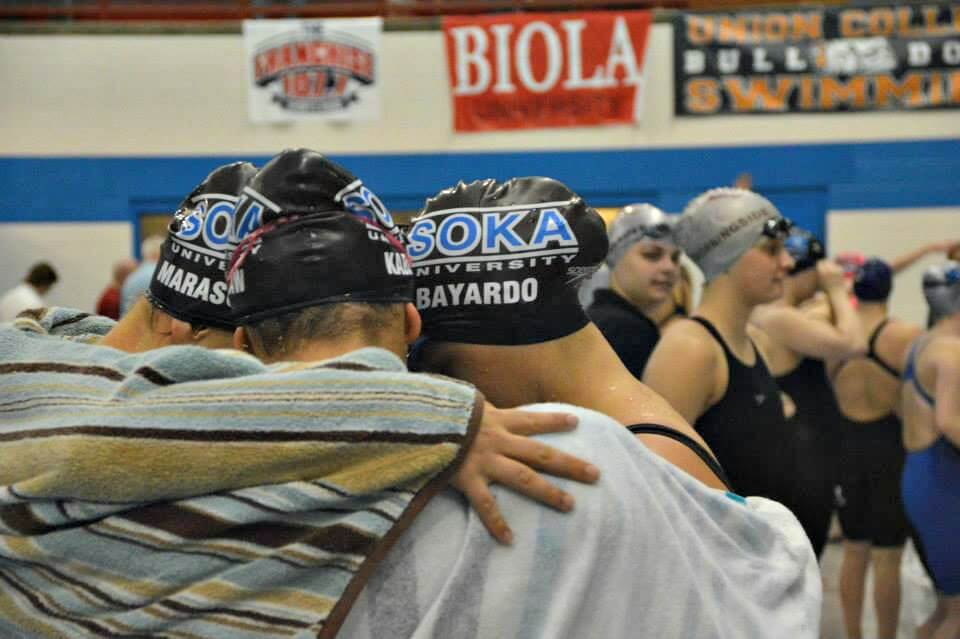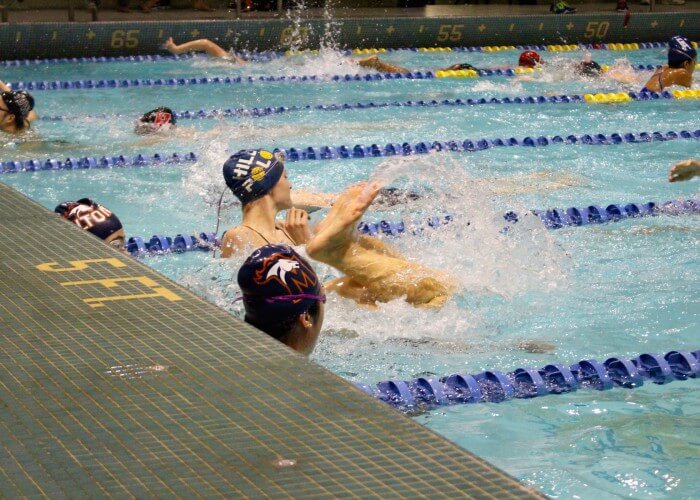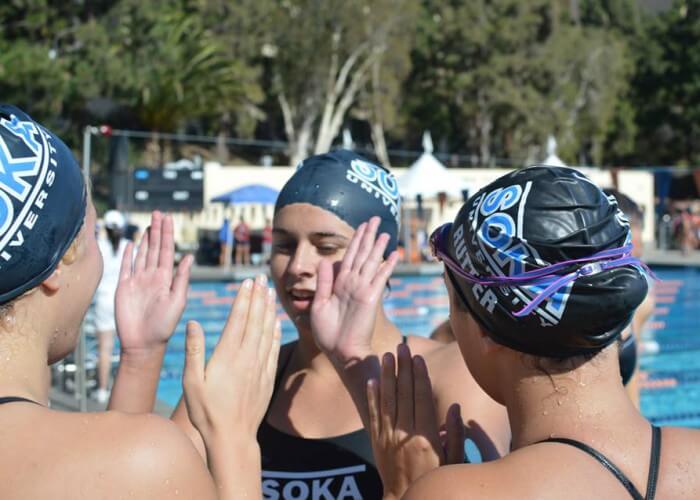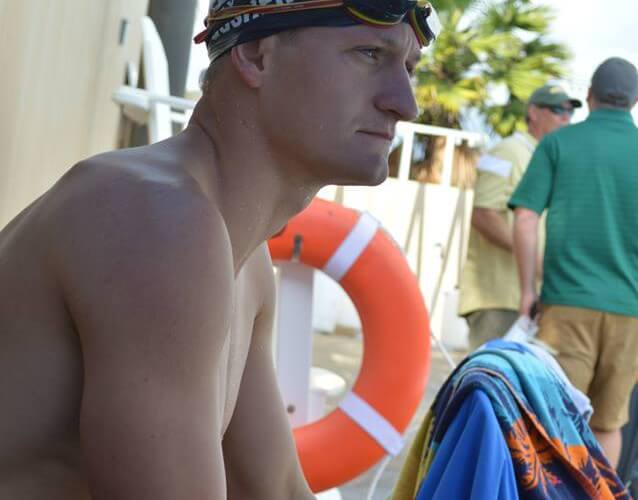3 Ways to Be Race Ready Behind the Blocks

By Cassidy Lavigne, Swimming World College Intern
Every swimmer has a different and unique way of warming up and preparing for a race. Some visualize or listen to their go-to pump up song, while others do a few body smacks and high jumps to stay loose. I tend to have the problem of overthinking my race and psyching myself out. My coaches and teammates know that in order for me to swim well, I need to be as relaxed and, in a way, as unfocused on my race as possible.
Of course, I know this tactic of being carefree at big meets is not everyone’s method. So, I decided to ask my SUA Lion teammates a simple, yet open ended question: How do you get ready for your race?
1. Get a great warm-up in.

Photo Courtesy: Taylor Brien
Warm-up is such a crucial part of racing, and while all swimmers know the overwhelming chaos of meet warm-up pools, it is often the place some will find tranquility. Sophomore Hanna Rossen sat down with me and gave me an idea of what goes through her head before she races:
I make sure that I get a good warm-up in. I don’t like warming up and then having a solid chunk of time before my race, so I’m usually one of that last ones in the warm-up pool and one of the last ones out; then straight to the blocks. Before my race, I’m not thinking of much. For shorter races, like the 50, I kind of imagine my muscles getting taut and strong- true sprint style. But for longer races, like the 500, I have to think about it. I think about how I’m going to breathe, when to settle into my base-pace, and when to make a move. Moments before the race I’m usually doing small jumps, shaking out my hands, or cracking my neck before the announcer says “Take your marks.” Then it’s go time.
2. Don’t overthink it.

Photo Courtesy: Nick Peck
Overthinking anything, both on and off the pool deck can drive anyone crazy, which is why it is important to not sweat the small stuff, especially before a race. That’s what practice is for! This balance of thinking about your race, but not overthinking everything is what Sophomore Michael Nunn does to preform his best at both dual and national-level meets.
Before my race I try not to overthink too much. I like to think about the small things. If I focus on the bigger parts of my race, I’ll get too wrapped up about my stroke technique or something, so I usually think about getting in and out of flip turns and being quick off the start. The only thing I really visualize is just getting into my stroke and my stroke pattern and feeling the tempo. When I’m swimming the 200, I usually think about how I’m going to build, and by the time on the last 50 I’ll race the people in my heat and think about the people around me. If it’s a short race like the 50, I’ll try to get myself more amped up, but I just try to think about the small things.
3. Visualize it.

Photo Courtesy: Nick Peck
Walking up to the blocks and having a clear plan of what your race is going to look like is key for juniors Taylor Karnilaw and Dominic Goshert. Like a mental race rehearsal, Karnilaw and Goshert like walking up to blocks knowing each move, feeling, and strategy of their races. Goshert walks through each length of his race with a plan:
I like going into my races with a plan. I try to visualize each part of the race. Since I normally swim the 200 fly, I try to break up the race into different parts. First comes the start, which doesn’t necessarily have to be perfect since it’s a 200, but I still want to have a good amount of momentum going into the water to make the first 75 as easy and fast as possible. I tend to think of the first 75 as a build, where I focus on slowly increasing my speed and stroke rate while still trying to keep each stroke as long and as smooth as possible. Then the last 125 is sprint, where I use the speed I built up to push myself through the always difficult third 50 of the race and use any strength left to finish.
Karnilaw is also a visualizer. Her imagined plan is a way to calm her nerves and get focused and ready to race:
Before racing, especially for longer races I visualize what each section of my race should feel like and think of the paces I want to be holding or imagine myself finishing the race. I remind myself that I have trained for this event and trained well, that I am capable, shaved, tapered and wearing a fast suit and that everything is working in my favor. I also remind myself to have fun and to race, because I absolutely love the feeling of racing. I do some deep breathing to regulate my nerves and shake out my arms and legs– I saw someone do that one time when I was younger and now I have kind of picked it up as a superstitious habit. I focus on the end of the lane where my teammates are cheering and I try to keep it light and not get too in my head. Once I am on the block instinct takes control and I just go.
After interviewing my teammates I feel like I learned a little more about what gets them raring to race. Moreover, their individual responses reinforce my belief that the mental component of swimming is more important than many people realize. Whether it’s waking up for practice and jumping in a cold pool, pushing through a hard set, or being prepared for a race, thinking before races to calm nerves or find strength is part of having a good warm-up and a successful race.



